Of the blue tiger and the flame of the forest : A travelogue
22nd February 2015
Living in Mumbai, among concrete jungles, continuous honking and people with no time for anyone including themselves, it is very difficult for a person to go out somewhere and stop to experience peace while at the same time stay within the vicinity of the city to run back and move on with life.
Exactly the reason I jumped at the chance to go to the Tungareshwar patch of theSanjay Gandhi National park in Mumbai. The nature club at my college was organizing it and it seemed like the best way right then to let off a lot of heat and stress of a hectic week. Some time with the soothing breeze and trees.
Exactly the reason I jumped at the chance to go to the Tungareshwar patch of theSanjay Gandhi National park in Mumbai. The nature club at my college was organizing it and it seemed like the best way right then to let off a lot of heat and stress of a hectic week. Some time with the soothing breeze and trees.
We met at our college in South Mumbai at 6 am and started by 6.15 to Tungareshwar. The journey ideally takes about 1 hour and ten minutes (58.7 km) , but we stopped at Dadar, Bandra, Andheri, Mira Road and Borivali to pick more students on our way. We reached Tungareshwar at about 7.30 am and started walking into the forest. Tungareshwar is a popular picnic spot during the monsoon season, which eventually led to a lot of human encroachment into the forests.
Before we could start seeing anything interesting in nature, we saw a few temples as proof of human encroachment into the forest. Also, since we visited during the months closer to summer, there weren’t any people since it is off season at this time.
Before we could start seeing anything interesting in nature, we saw a few temples as proof of human encroachment into the forest. Also, since we visited during the months closer to summer, there weren’t any people since it is off season at this time.
A few 100 metres into the forest, we heard heavy rustling of leaves and we looked up to find a langur looking at us and jumping from tree to tree. Langurs are quite common in this part of Maharashtra and there are about six species of Langur in Sanjay Gandhi National Park itself.
Walking on , we spotted several Ants nests, commonly called the Pagoda antsnest because of its physical structure.
If I haven’t mentioned this before, the Tungareshwar part of the Sanjay Gandhi National Park are deciduous forests. A lot of beautiful trees like the Palash, Jarul, and Gulmohar decorate it, and one can hear a variety of bird calls and spot many specie of birds if you walk quietly.
On this trip, we spotted Igrets, bulbuls, and Coppersmith Barbets among many others. Butterflies follow you around the area, and you can spot the monarch, common crow, sailor, the Baron and some blues.
Walking on , we spotted several Ants nests, commonly called the Pagoda antsnest because of its physical structure.
If I haven’t mentioned this before, the Tungareshwar part of the Sanjay Gandhi National Park are deciduous forests. A lot of beautiful trees like the Palash, Jarul, and Gulmohar decorate it, and one can hear a variety of bird calls and spot many specie of birds if you walk quietly.
On this trip, we spotted Igrets, bulbuls, and Coppersmith Barbets among many others. Butterflies follow you around the area, and you can spot the monarch, common crow, sailor, the Baron and some blues.
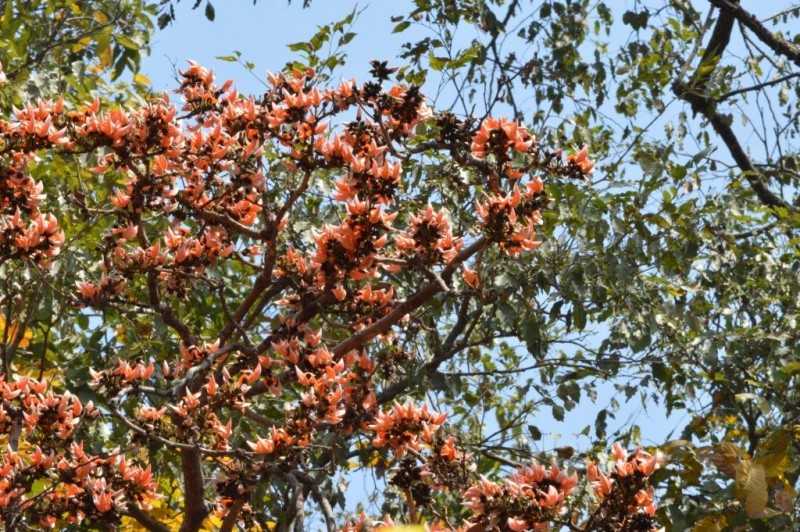
The flame of the forest- Palash
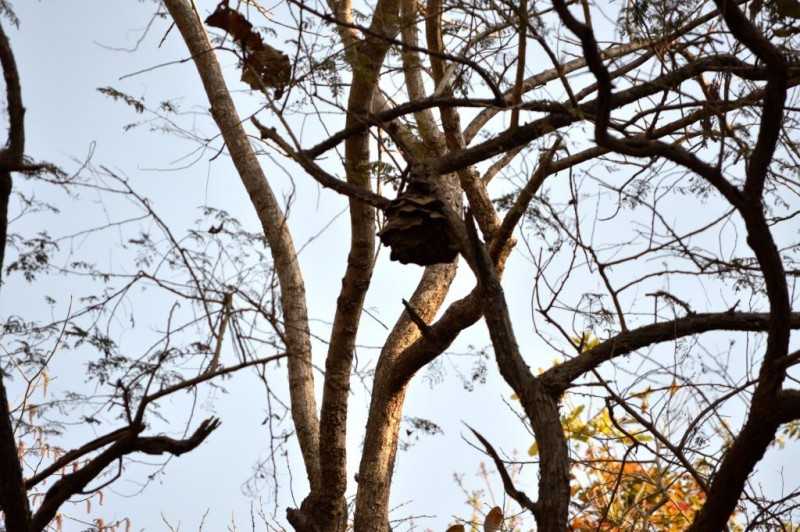
A pagoda ant nest
2 kilometres into the forest we found the spot most frequented by the picnickers who visit, The Tungareshwar temple followed by the Tungareshwar waterfall. The temple had artificial parks built around it to attract families and it looked out of place and if I may use the word, ugly to be in the midst of such greenery.
The Tungareshwar fall isn’t active at this time and is reduced to small ponds here and there with rocks surrounding it. Nevertheless, it is a beautiful sight to behold and utterly peaceful.
The Tungareshwar fall isn’t active at this time and is reduced to small ponds here and there with rocks surrounding it. Nevertheless, it is a beautiful sight to behold and utterly peaceful.
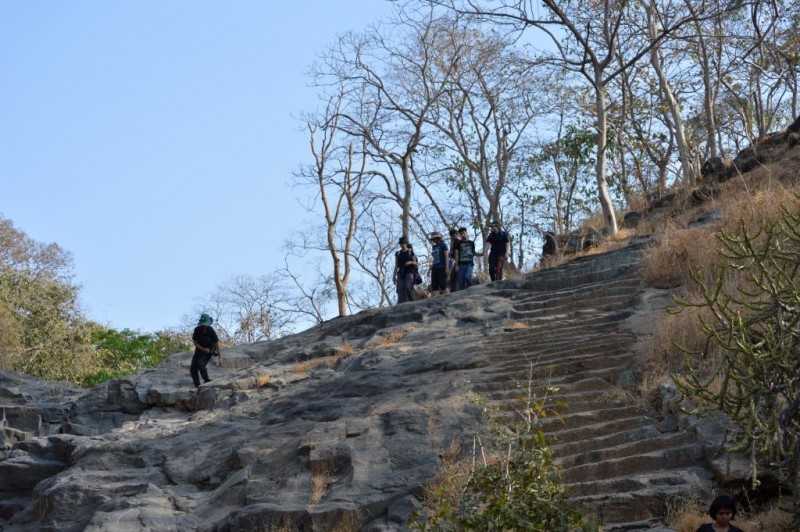
Descending to the waterfall spot.
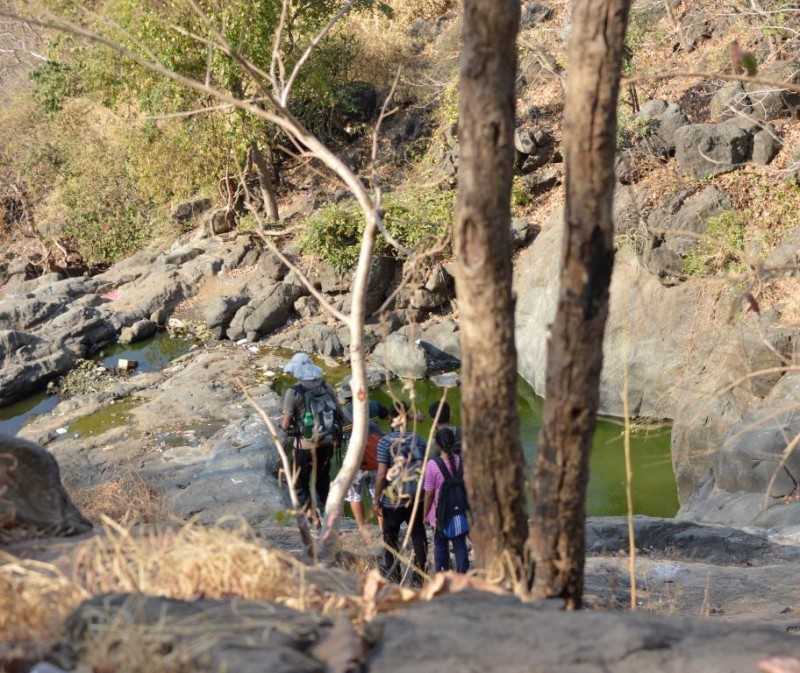
The waterfall spot that is not active in the summer months.
We were all let off to explore on our own and I happened to wander off and find the old, shed skin of a snake. It seemed to be that of a rat snake or a cobra, and it caused ripples of excitement among the group. Putting it into one of our Pringles cans, we climbed out of the waterfall spot and back to the bus to take us to the Nagla part of the national park. (12.00 pm)
Find more travel ideas and inspiration at Holidify.com !
Nagla forest
The Nagla forest is a part of the Sanjay Gandhi national park which is actually less frequented by crowds. The path in Nagla is a continuous mix of climbs and slopes, making it fun to walk and explore nature. The entry fee for this part is 40 ruppees, but will not remain the same according to a few rumors that have been travelling around.
The Nagla forest has an interpretation centre after an hours trek into it, and this part is known for its Leopard population.
A few hundred metres into the forest, we spotted the gorgeous blue tiger butterfly and I was lucky enough to capture it in time. We can say that it was posing for the camera, much unlike many other butterflies.
The Nagla forest has an interpretation centre after an hours trek into it, and this part is known for its Leopard population.
A few hundred metres into the forest, we spotted the gorgeous blue tiger butterfly and I was lucky enough to capture it in time. We can say that it was posing for the camera, much unlike many other butterflies.
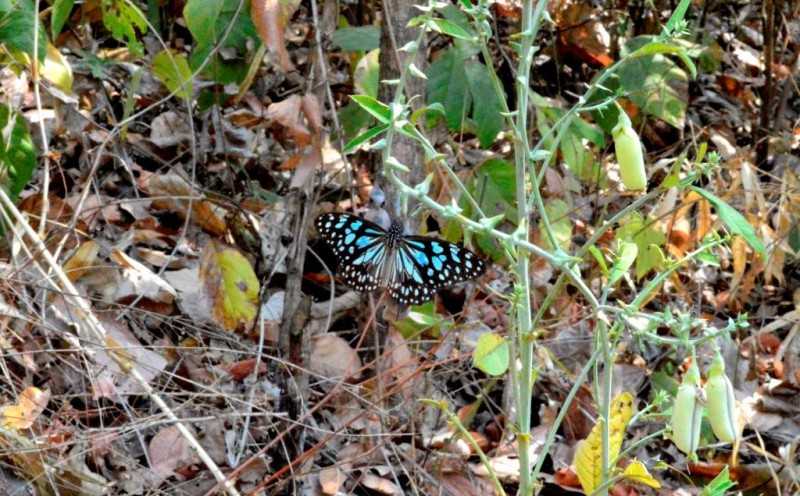
The Blue tiger butterfly
We reached the interpretation centre at about 1.30 pm and spent 15 minutes reading and understanding the facts displayed after which we headed towards the creek.
The Nagla part of the forest is different from the Tungareshwar part because it houses Mangroves. These mangroves can be seen when you head towards the creek, where you can sit and look at the hills beyond. It is a brilliant place for writers photographers, poets and anyone who is a thinker, with steps going into the water of the creek and so much greenery around.
The Nagla part of the forest is different from the Tungareshwar part because it houses Mangroves. These mangroves can be seen when you head towards the creek, where you can sit and look at the hills beyond. It is a brilliant place for writers photographers, poets and anyone who is a thinker, with steps going into the water of the creek and so much greenery around.
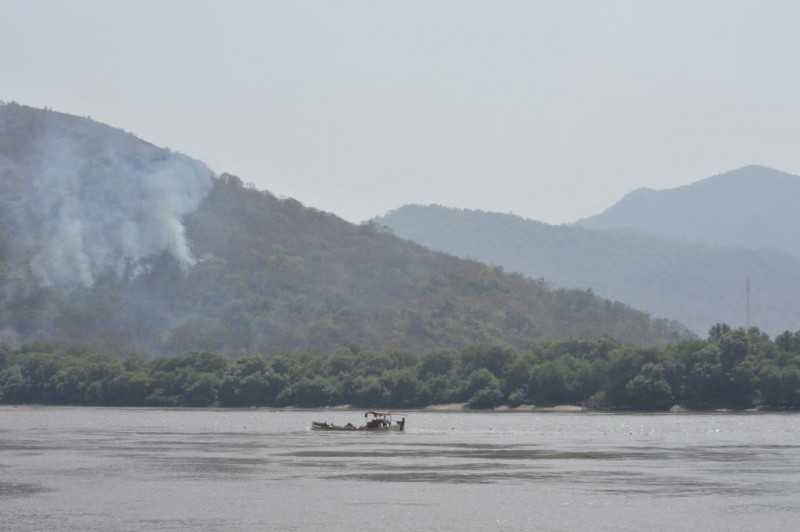
The creek at Nagla
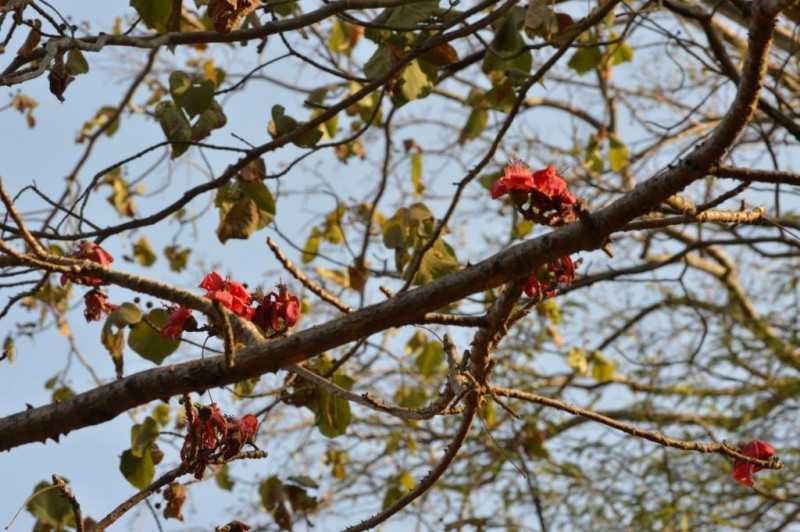
Gulmohar flowers at Nagla
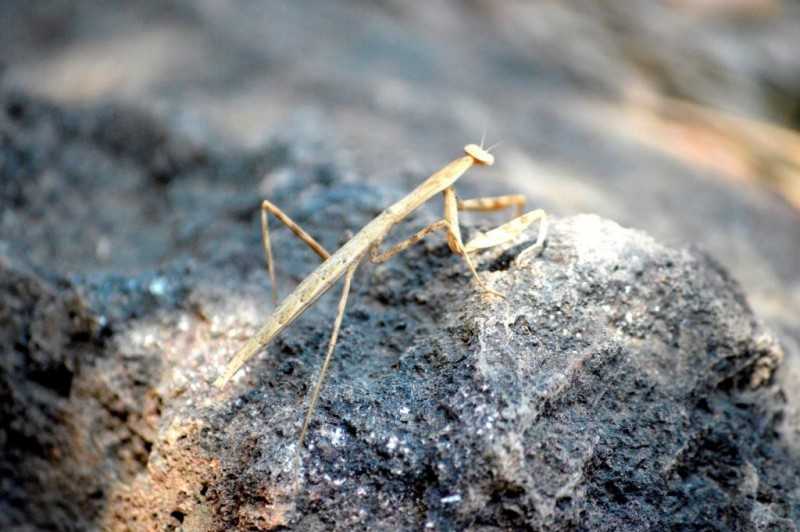
A praying mantis I managed to capture at Nagla
We spent about half an hour contemplating about various things and headed back to the bus at 2.00 pm
This trek was especially very rewarding because we could see two types of forests in the same day. The trek is not too time consuming, nor hard but at the same time it is a great break from city life.
Peace, tranquility and the fresh smell of leaves and bark, guaranteed.
Peace, tranquility and the fresh smell of leaves and bark, guaranteed.
A few tips while trekking in the summer season :
1. Carry a minimum of 2 ltrs of water.
2. Wear comfortable clothing and shoes
3. Carry enough dry fruits and other sugar pumping foods (chocolate, candies, energy bars, cereal)
4. Carry something to cover your head. It can get extremely hot, and a lot of your energy runs off when it is really hot. You tend to feel more tired.
5. This is a general tip for all treks, but try not to carry much around in your bags. Backpacks are always the best. One shoulder bags will start hurting after a while.
6. Your camera can get extremely hot, keep it protected. It can also get dusty, so carry something to cover your mouth while you trek.
7. Lastly, you will see a lot of berries and pods that look delicious. Try not to eat them. Spoken from personal experience.
No comments:
Post a Comment